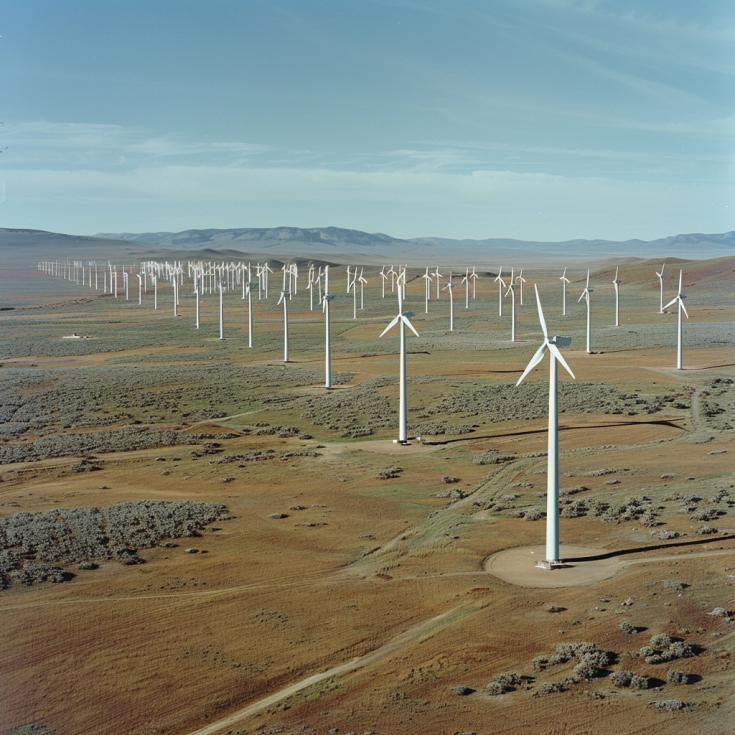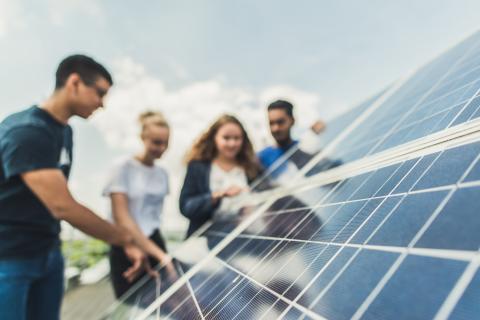Increasing the social acceptance of wind energy

Wind energy significantly contributes to Europe’s energy mix, reaching 17% of total power demand in the EU27+UK in 2022. However, wind farms, whether onshore or offshore, are often controversial.
While there is high acceptance of renewable energy projects in Europe, this varies widely based on technology. A survey for the European Climate Foundation concluded that 86% of people would support new renewable energy projects near where they live, but this falls to only 62% for wind energy projects.
There are multiple reasons for this lower acceptance, ranging from:
- Aesthetics and impact on the landscape,
- the impact on wildlife,
- the belief that noise or visual flicker will negatively affect their comfort,
- or that wind farms change land-use from leisure or agricultural uses.
Others simply do not consider wind turbines to be a cost-effective solution, compared to other energy technologies.
To build social acceptance of wind technologies, policymakers have developed various solutions for bringing people on board.
Engaging the community and spreading the benefits
The most promising approaches treat the community as partners, allowing citizens to part-own installations through energy communities or otherwise benefit from them. At the very least, communities need to be involved in planning and consulted on changes to their surroundings, with their concerns and inputs taken into account.
The earlier mentioned survey found that support increased significantly when installations were co-owned by the local community, or otherwise brought local benefits such as the creation of new jobs, or cheaper energy prices.
There are several examples of Community Owned Wind Farms in Europe, such as those in Devon (United Kingdom) in which citizens have invested more than 6 million EUR into community projects, including a 225kw wind turbine in South Brent which is 100% community owned. Another example is that of Templederry (Ireland), where a community wind farm provides more than 3,500 homes with clean energy.
Other interesting approaches include Tula (Sardinia, Italy) where 2% of annual gross revenue from a wind farm has been given to the municipality to fund municipal services and social interventions, resulting in a tax cut for local households. In a similar vein, Allande (Asturias, Spain) has implemented a collaborative process for wind farm development which requires developers to consider and mitigate their potential impact on communal lands, and has resulted in a solution whereby revenues are shared to provide community benefits, including maintaining public building.
Addressing environmental considerations
Wind farm developers and local authorities should also take seriously the concerns related to environmental and health impacts. They can do so by conducting thorough assessments and studies to provide evidence related to:
- Noise levels
- Wildlife impacts
- Public health
It may also be advisable to consider wind energy development as part of a wider redevelopment, to couple it with other environmental benefits.
For example, the Sliabh Bawn Wind Farm in Ireland was opened with recreational facilities for citizens, including walking routes and picnic areas, and the planting of native trees. The wind farm also created a community fund to reinvest in local projects. The Klingenberg wind farm in Schleswig-Holstein (Germany) was accompanied by compensatory measures for rewetting peatland to reduce carbon emissions from the peat and restore biodiversity.
Increasing awareness of wind energy performance
Those who are familiar with wind technologies tend to be less sceptical of their performance or impact on the environment. As such, public authorities can help to increase acceptance with educational and awareness raising activities. Tours and visits to existing wind farms can be particularly useful, giving community members first-hand experience with the technology and its operations, and allowing them to see and hear turbines up close and learn about their functioning and benefits.
For example, in Helmstedt (Lower Saxony, Germany), the Wind Energy Experience Park enables children and adults to learn about wind energy, nature conservation and climate change. In particular, the site is used often for school visits, and offers interactive activities for participants to learn about wind energy.
Resources for building acceptance from Interreg Europe
For more on increasing acceptance of wind energy projects, see the BIOWIND and APPROVE projects, or for more on the overlap between renewable energy and ecosystem services, see IRENES. For more on energy communities, see our policy brief on Empowering citizens for Energy Communities.

Explore our collection on energy communities
Our experts have hand-picked the most relevant content for you on the topic so you can dive right in!